- Home
- /
- Electric Vehicles
- /
- India’s Blue Energy Motors Unveils…
Introduction: Redefining the Road for India’s Freight
The transportation sector in India, the lifeblood of the nation’s commerce, stands at a critical juncture. Faced with the dual pressures of soaring fuel prices and the urgent mandate for decarbonization, the shift to electric vehicles (EVs) is no longer a choice but a necessity. However, for heavy duty, long haul trucking, the transition has been stalled by one major headache: charging downtime.
Blue Energy Motors (BEM) has stepped in to tackle this challenge head on. With the launch of the BE 5548e, India has received its first electric heavy duty truck featuring state of the art battery swapping technology. Unveiled at BEM’s state of the art manufacturing facility in Chakan, Pune, this launch, presided over by Maharashtra’s Chief Minister, is more than just a new vehicle introduction; it is the cornerstone of a new infrastructure model designed to ensure that electric trucks spend less time charging and more time moving freight. This move positions India at the forefront of sustainable logistics, offering a viable, high efficiency, and economically sound alternative to traditional diesel haulers.
The Truck That Never Stops: Technical Prowess of the BE 5548e
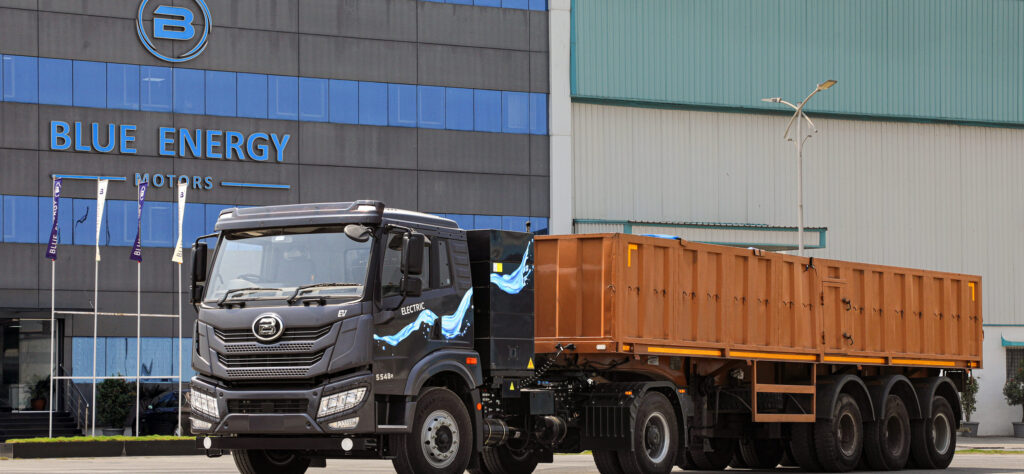
The BE 5548e is a 55 ton Gross Combination Weight (GCW) tractor trailer designed specifically for the rigorous demands of Indian roads and high tonnage logistics. It is a powerful machine that merges performance with environmental responsibility.
BEAT: Blue Energy Advanced Technology Platform
The trucks are built on the proprietary BEAT (Blue Energy Advanced Technology) platform, specifically engineered for Indian road and climate conditions. BEAT delivers industry-leading powertrain efficiency exceeding 95%, and incorporates advanced mobility intelligence that optimizes performance parameters like route, terrain, and driver behavior.
Power, Performance, and Payload
At the heart of the BE 5548e is a Permanent Magnet Synchronous Motor (PMSM) that delivers 480 horsepower and a commanding 2400 Nm of torque at 1990 rpm. This power is managed by a 4 speed Automated Manual Transmission (AMT), enabling robust acceleration and hill climbing capability. In fact, the truck boasts a gradeability of 24 percent, a crucial metric for navigating India’s varied terrain, and can go from 0 to 30 km/h in under 4 seconds.
Built on a proven chassis frame, the 4×2 right hand drive configuration ensures stability and durability under heavy loads. Its kerb weight is approximately 8.8 tons (without the trailer), and it offers the highest payload capacity in its category, which directly translates to better operational economics for fleet owners.
The Innovation: Module to Bracket Battery Swapping
While the truck does offer dual gun fast charging (CCS2 Type) that can take the battery from 20 percent to 80 percent in just 45 minutes, the real breakthrough is the Module to Bracket (M2B) swappable battery technology.
The truck is powered by a swappable Lithium Iron Phosphate (LFP) battery with a capacity of up to 282 kWh, providing a vehicle range of around 200 km. The battery unit itself is designed with high energy density and a flexible, scalable architecture, making the modules 30 percent smaller than previous designs.
The swapping technology effectively eliminates range anxiety and long charging downtimes, two of the biggest hurdles facing heavy duty EV adoption.
BEM 5548e Heavy-Duty EV Specifications
| Feature | Details |
|---|---|
| Gross Combination Weight | Up to 55 tonnes |
| Motor | 480 HP PMSM motor |
| Torque | Around 2400 Nm |
| Transmission | 4-speed AMT |
| Battery Architecture | Modular M2B design |
| Battery Capacity Options | 282 kWh to 423 kWh |
| Estimated Range | Up to about 200 km |
| Regenerative Braking | 5-stage system |
| Driving Modes | Eco and Power |
| Cabin Features | Air-suspended seat, climate control, cruise control, hill-start assist |
The Infrastructure Revolution: Swapping in Under Five Minutes
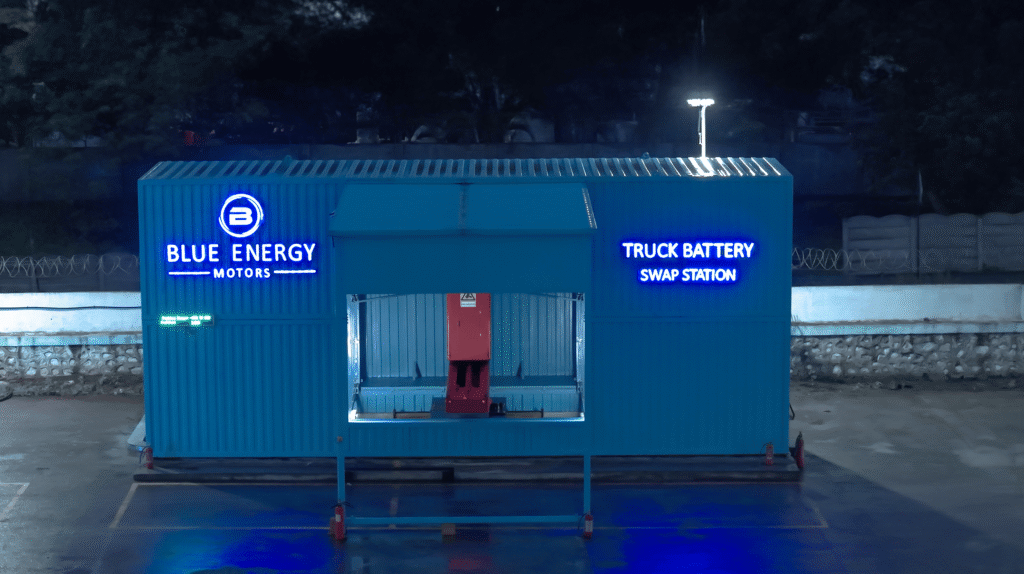
A truck is only as good as the infrastructure supporting it, and BEM has rolled out an equally innovative solution for energy replenishment: the voice enabled battery swap station.
India’s First Fully Automated Swap Station
This is not a manual pit stop. The swap stations are India’s first fully automated, unmanned facilities specifically designed for heavy duty electric trucks. Using a plug and play design with swivel and robotic technology, the system can exchange a depleted battery with a fully charged one in under five minutes.
The process is highly automated, utilizing laser guided systems for battery positioning and RFID vehicle recognition combined with voice commands and a display for driver guidance. Requiring a compact footprint of only around 50 square meters, these stations are quick to deploy, taking less than 48 hours to set up, making them ideal for logistics hubs and highway corridors. The company plans to establish 1200 swap stations across 230 selected locations to build out the network.
The Electric Corridor
Complementing this infrastructure is the declaration of the Mumbai–Pune highway as India’s first official electric corridor. This is a strategic move, as this route is one of the nation’s most crucial commercial links. The establishment of this corridor is the first step in BEM’s ambitious plan to build a nationwide network for sustainable logistics, with a goal of electrifying major national highway corridors within the next three years.
Swap Station Specifications
| Feature | Details |
|---|---|
| Swap Time | Under 5 minutes |
| Station Footprint | About 50 square meters |
| Swap Mechanism | Robotic system with laser-guided alignment |
| Battery Capacity per Station | Holds 3 swappable batteries |
| Charger Capacity | 720 kW |
| Efficiency | Above 95 percent |
| Connectivity | GSM, Wi-Fi, LAN |
| Safety | Overload and surge protection, thermal management |
| Renewable Integration | Designed to work with renewable sources |
The Business Model: Energy as a Service (EaaS)
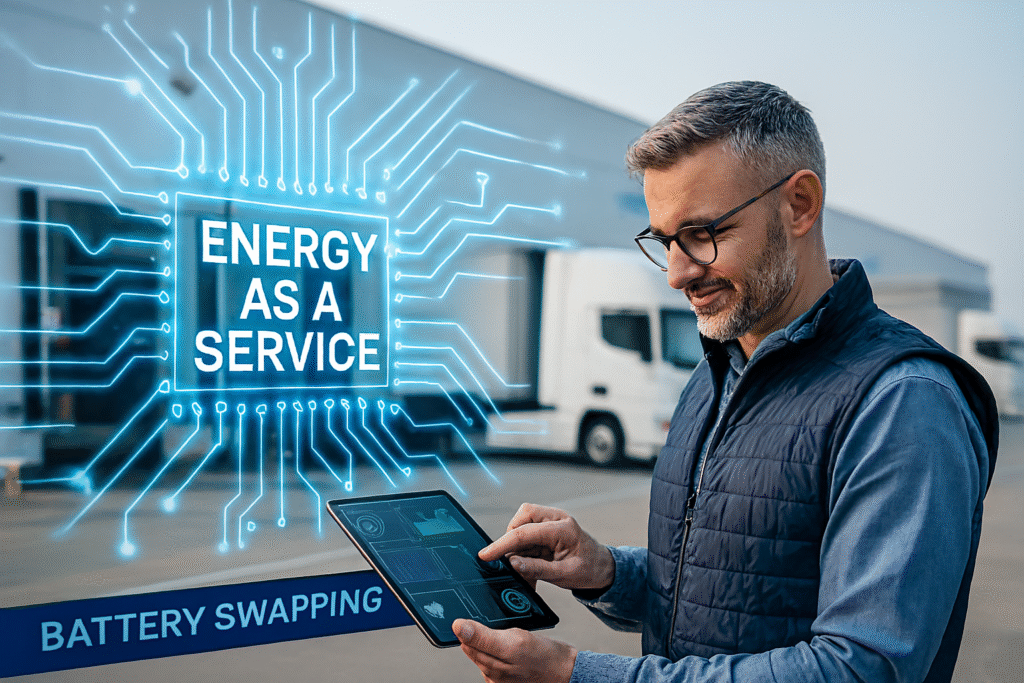
For fleet operators, the shift to electric vehicles often involves a massive upfront capital expenditure, mainly due to the cost of the battery. BEM is addressing this through an industry first business model: Energy as a Service (EaaS) for heavy duty trucks.
Under the EaaS model, the cost of the battery is effectively decoupled from the cost of the truck. This significantly reduces the initial purchase price for the fleet operator. Coupled with the efficiency of battery swapping, the EaaS model offers several compelling advantages:
- Lower Total Cost of Ownership (TCO): By reducing upfront capital and minimizing charging downtime, the BE 5548e is projected to have the lowest TCO in the industry.
- Maximized Uptime and Reliability: Swapping batteries in under five minutes means trucks can run near continuously, drastically increasing the kilometer per day driven and improving route efficiency.
- Well to Wheel Green: The system is designed to integrate renewable power sources, ensuring that the energy powering the swap stations and the trucks is as clean as possible.
This integrated approach combines advanced truck technology, a robust energy infrastructure, and a financially sound service model, effectively redefining fleet economics and ensuring a higher return on investment for logistics companies.
The Model in Brief
| Aspect | Details |
|---|---|
| Ownership of Battery | BEM retains ownership |
| Payment Model | Pay per swap or pay per unit of energy consumed |
| Benefit to Fleet Operators | Lower upfront cost, predictable operating expenses |
| Upfront Cost Reduction | Up to around 50 percent lower since battery is not purchased |
| Target Users | Fleet owners and logistics operators |
| Expansion Plan | Initial focus on Mumbai–Pune corridor, building out a wider national network |
The Launch and Early Deployment
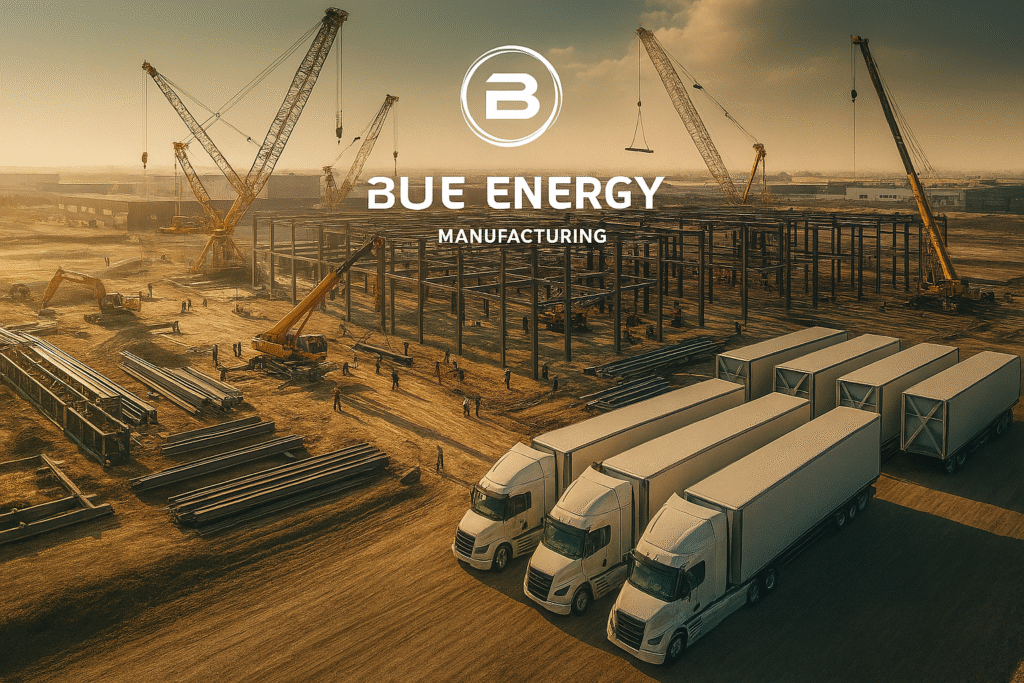
Maharashtra Chief Minister Devendra Fadnavis unveiled the truck on 16 October 2025 at Blue Energy’s new plant in Chakan, Pune, which can produce 10,000 vehicles a year. On the same day, the Mumbai-Pune electric corridor was inaugurated, the first fully supported highway stretch for electric trucks in the country, with plans to expand to all major national highways within three years.
A few weeks later, on 25 September 2025 wait, dates align around late 2025, Union Minister Sarbananda Sonowal flagged off India’s first fleet of 50 such trucks at Jawaharlal Nehru Port Authority (JNPA). The port aims to convert 90 percent of its internal haulage fleet to electric by the end of 2026.
Blue Energy has already signed MoUs for more than 10,000 trucks and inked a deal with the Maharashtra government to build a second factory with 30,000-unit annual capacity, backed by a ₹3,500 crore investment.
Strategic Implications & Impact
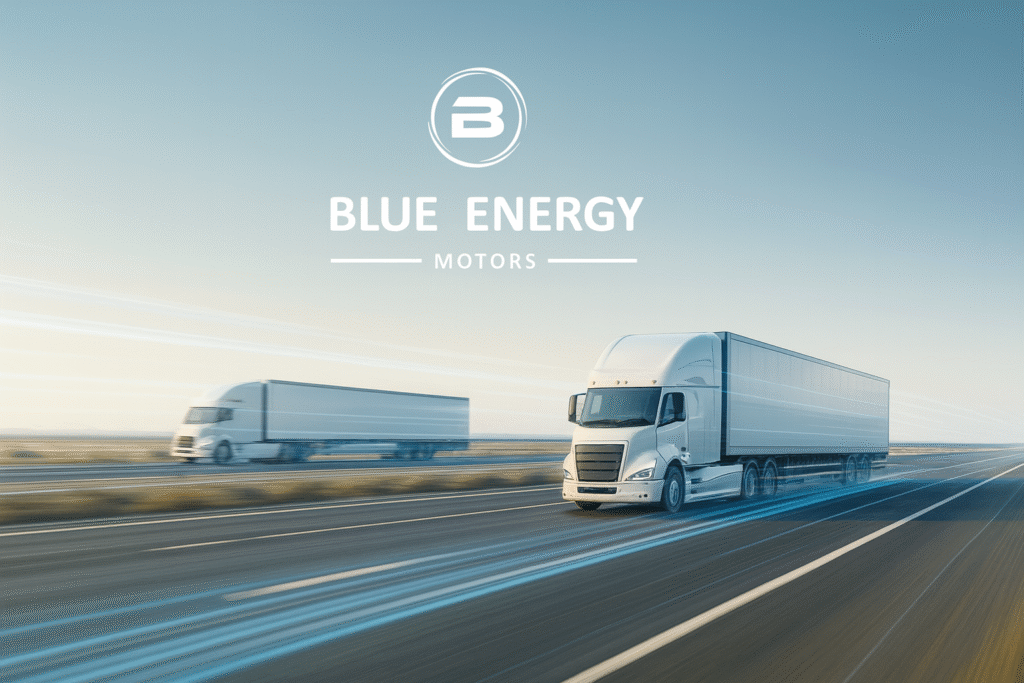
Reducing Downtime
Long charging times are a major obstacle for heavy EV adoption. With sub-5-minute swaps, BEM’s solution could rival the turnaround of diesel refueling, dramatically improving fleet utilization.
Lower Total Cost of Ownership (TCO)
Thanks to the EaaS model and reduced capital burden, fleet operators stand to benefit from predictable and relatively lower operating expenses. BEM claims its builds yield the lowest TCO in the category.
Scalable Infrastructure
The compact size and automated nature of the swap stations make them easier to deploy and scale across industrial corridors and logistics hubs.
Green Corridor Vision
The launch of the Mumbai-Pune electric corridor, with swap stations at strategic points, is the first step toward a broader electrification network for highways.
Emission Reduction & Sustainability
By promoting zero-emission freight transport, BEM contributes to climate goals and reduces pollution in heavily trafficked logistics routes.
Made-in-India EV Leadership
This is a “Made in India” initiative backed by local manufacturing, which supports job creation and local value addition, aligning with industrial and environmental policy objectives.
Challenges & Risks
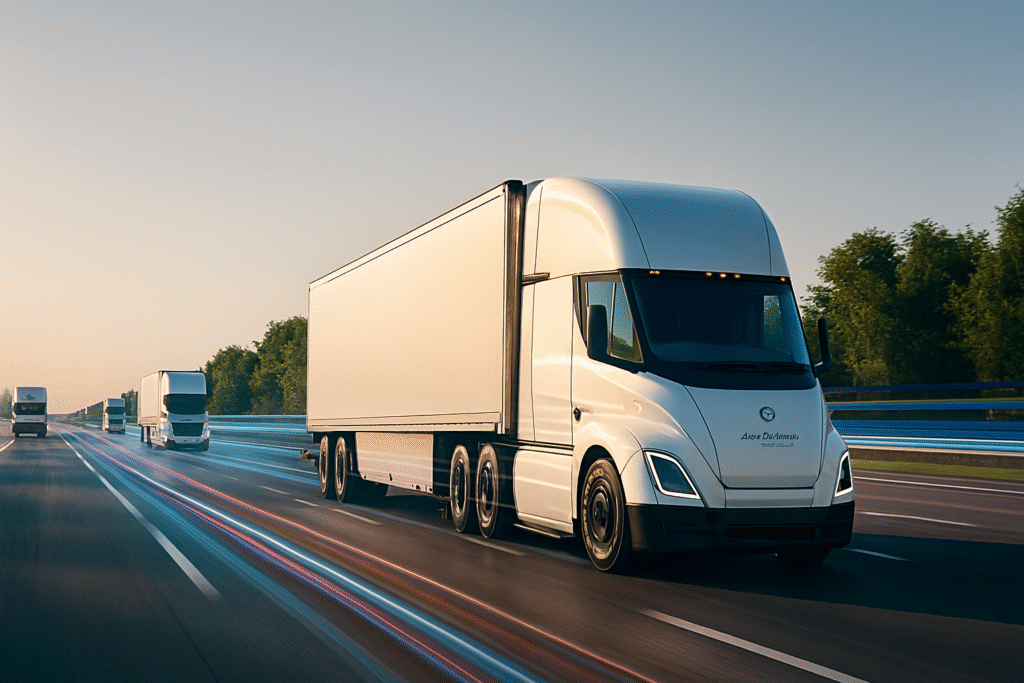
While the innovation is promising, scaling this model will not be trivial:
Capital Intensity
Building and maintaining swap stations is expensive, especially with high-power robotics and automation.
Battery Inventory
Managing a rotating stock of batteries (charged, discharged, in transit) requires efficient logistics and forecasting.
Standardization
For wide adoption, there may be a need for industry standards in battery modules, connectors, and safety protocols.
Grid Strain
High-powered swapping stations (720 kW) may stress grid infrastructure unless smart load management and renewable integration are well designed.
Adoption Risk
Fleet owners may remain hesitant without proven operational metrics across years; early adopters will be critical.
Recommended Readings
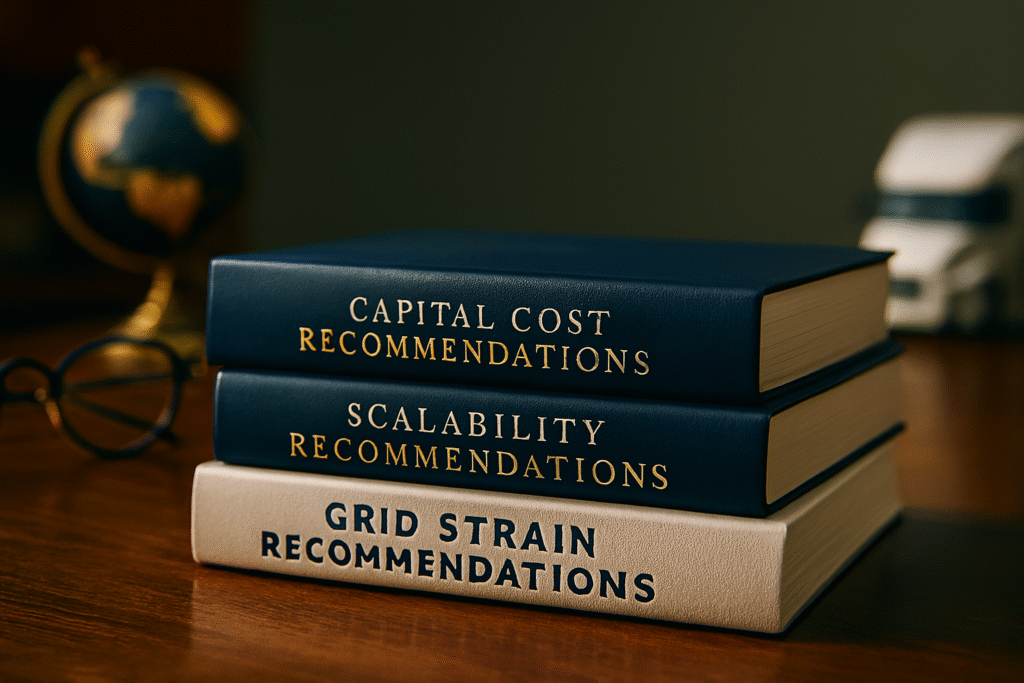
For those interested in the broader context of transportation, energy transition, and logistics, here are a few recommended books:
- “The New Map: Energy, Climate, and the Clash of Nations“ by Daniel Yergin. Provides a macro perspective on how the global energy transition, including the shift to electric mobility, is reshaping geopolitics and commerce.
- “The Box: How the Shipping Container Made the World Smaller and the World Economy Bigger” by Marc Levinson. While not directly about EVs, this book offers a deep dive into the innovations in logistics and transportation that have revolutionized global trade, offering context for the next wave of change.
- “Drawdown: The Most Comprehensive Plan Ever Proposed to Reverse Global Warming” by Paul Hawken. Explores practical solutions to climate change, with transportation efficiency and clean energy playing a key role, providing the underlying environmental driver for innovations like the BE 5548e.
- “The Prize: The Epic Quest for Oil, Money & Power” by Daniel Yergin: This book provides a deep historical understanding of our dependence on oil, which technologies like electric trucks are aiming to break.
- “Sustainable Energy – Without the Hot Air” by David J.C. MacKay: A pragmatic look at the numbers behind a transition to sustainable energy, offering a realistic perspective on the challenges and opportunities.
- “The Grid: The Fraying Wires Between Americans and Our Energy Future” by Gretchen Bakke: While focused on the U.S., this book offers fascinating insights into the critical importance of the electrical grid, which is the backbone of any electric vehicle revolution.
Frequently Asked Questions (FAQ)

Q1: What is the primary advantage of battery swapping over traditional DC fast charging for heavy trucks?
A: The primary advantage is speed and maximizing uptime. While fast charging still takes 45 to 60 minutes, battery swapping allows a truck to replace its depleted battery with a fully charged one in under five minutes. For commercial logistics, this near zero downtime is crucial for profitability and meeting tight delivery schedules.
Q2: What is the maximum range of the BE 5548e?
A: The BE 5548e has an optimal range of around 200 kilometers on a single charge (or swap). However, because the truck uses swappable batteries, its effective operational range is considered “unlimited,” as long as the supporting swap station network is in place along the route.
Q3: Where is the first electric corridor located in India?
A: India’s first official electric corridor for heavy duty trucks has been inaugurated on the Mumbai–Pune highway. This is intended to be the foundational step for a much larger national network.
Q4: What does ‘Energy as a Service’ (EaaS) mean for truck owners?
A: EaaS means the battery cost is separate from the truck’s purchase price. Fleet operators essentially pay for the energy they consume and the swapping service, rather than incurring the massive upfront cost of the battery itself. This dramatically lowers the initial investment and offers a predictable operational cost model.
Q5: Does the truck only rely on swapping, or can it be charged normally?
A: It supports both: battery swapping + fixed fast charging. The fixed charging station uses 240 kW dual-gun CCS2 chargers, allowing charging from 20% to 80% in under 60 minutes.
Q6: What happens to the old batteries?
A: In a swapping ecosystem, the company managing the stations can responsibly handle battery recycling and repurposing for second-life applications like energy storage. This centralized control is better than dealing with thousands of individual truck owners.
Q7: What is Module-to-Bracket swappable battery technology?
A: This refers to Blue Energy’s system where battery modules can be quickly swapped out in specialized stations, minimizing vehicle downtime and extending driving range with no need for lengthy charging stops.
Q8: How fast can the batteries be charged or swapped?
A: Charging from 20% to 80% SoC is completed in less than 45 minutes, but battery swaps are even faster, typically taking only a few minutes at dedicated stations.
Q9: What are the performance specs of the electric truck?
A: The truck delivers 480 HP, 2400 Nm torque, 0–30 km/h acceleration in under 4 seconds, and supports up to a 55-ton gross combination weight with a 3-axle trailer.
Q10: How does this truck help the environment?
A: By achieving zero tailpipe emissions and significant operational energy efficiency, it reduces CO₂ emissions by up to 108 tons per 50,000 kilometers annually.
Conclusion: Driving India’s Green Freight Future

The launch of Blue Energy Motors’ BE 5548e electric truck is more than just a new model on the market; it’s a fundamental shift in how India can approach freight transport. By integrating the truck with the country’s first dedicated electric freight corridor and an “Energy as a Service” model, the conversation moves beyond the vehicle itself to a holistic, scalable ecosystem. This approach makes the economics of electric logistics not just possible, but genuinely viable for fleet operators.
Built and tested for the unique challenges of Indian roads, this homegrown innovation is a direct response to national ambitions. It aligns perfectly with India’s goals for a greener, more self-reliant future and its commitment to net-zero emissions. As Blue Energy Motors scales up its manufacturing and begins deploying its network of battery swap stations, the heavy transport sector is witnessing the tangible start of its electric transformation.
This truck represents a watershed moment for clean mobility in India. It successfully merges practical battery-swapping technology with a purpose-built platform and smart fleet management solutions. This combination positions Indian logistics for a future that is not only more sustainable but also more efficient and cost-effective. It’s a clear signal of India’s determination to forge its own path in green transportation or green logistics, creating solutions that meet the tough, real-world demands of commercial freight. As adoption grows, the roads of tomorrow are being paved to be cleaner, smarter, and powered by homegrown ingenuity.

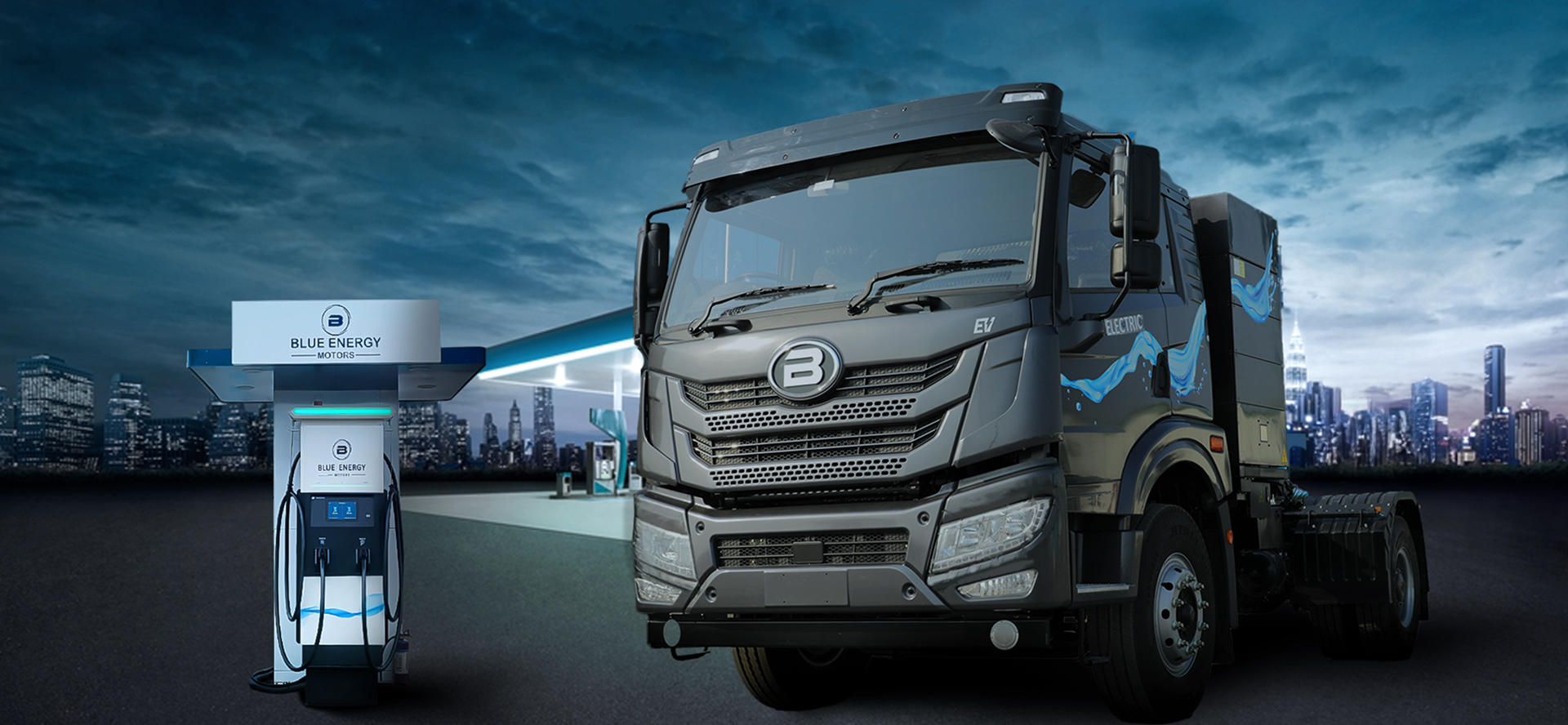



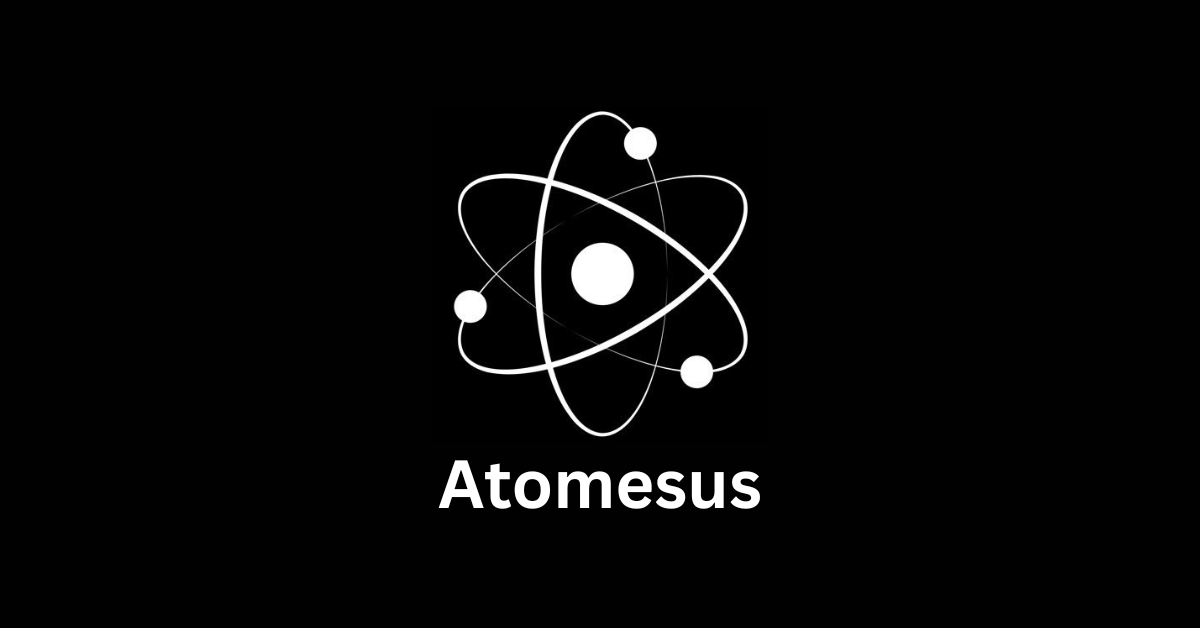

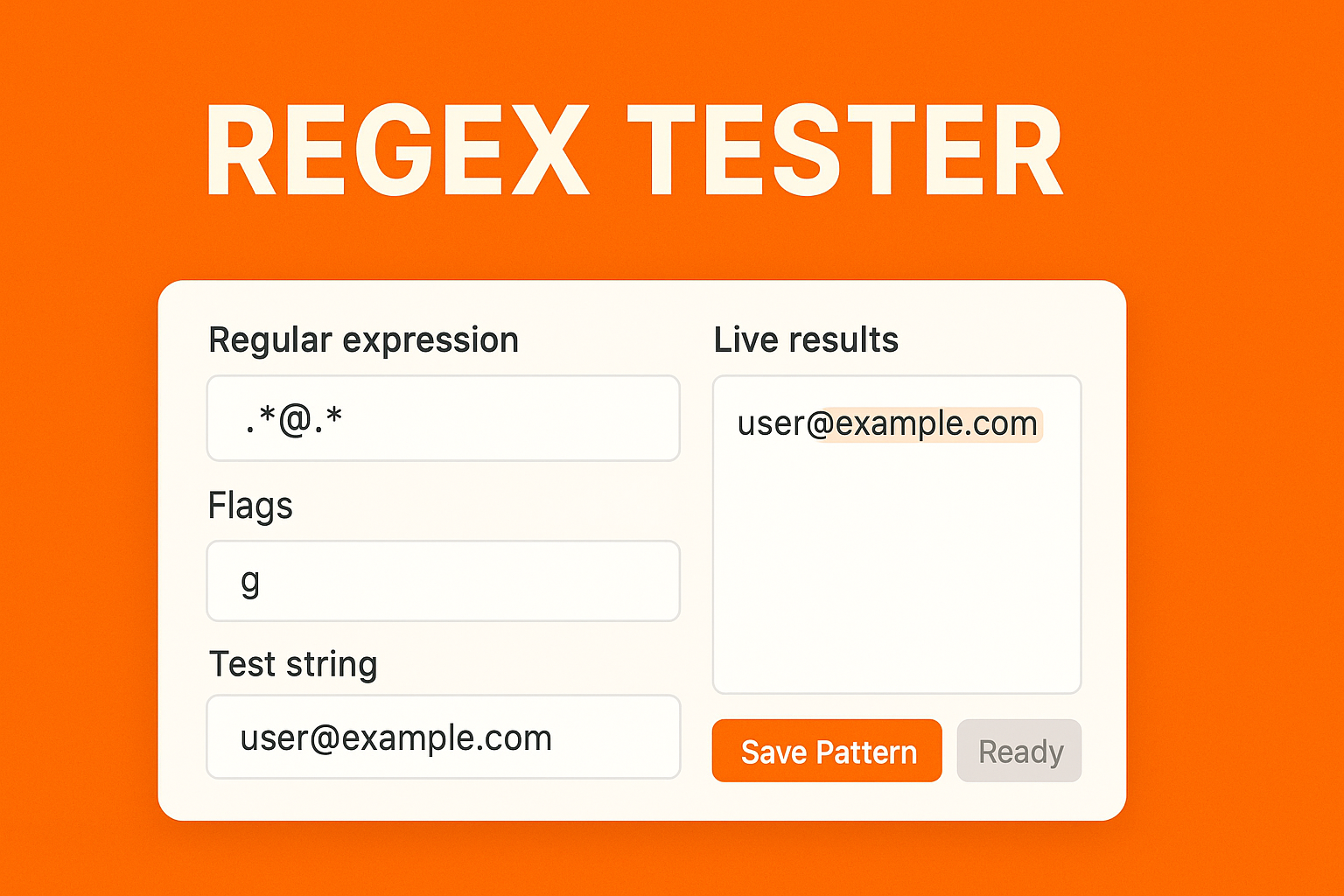



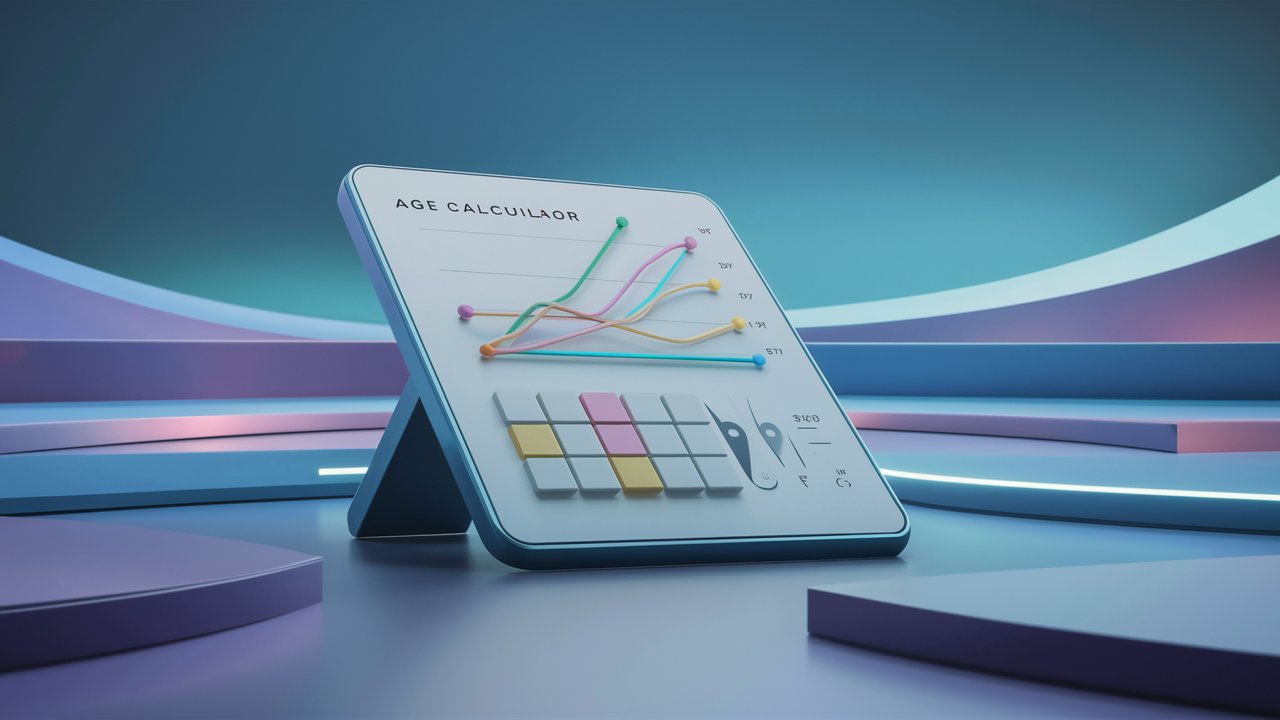

Leave a Reply